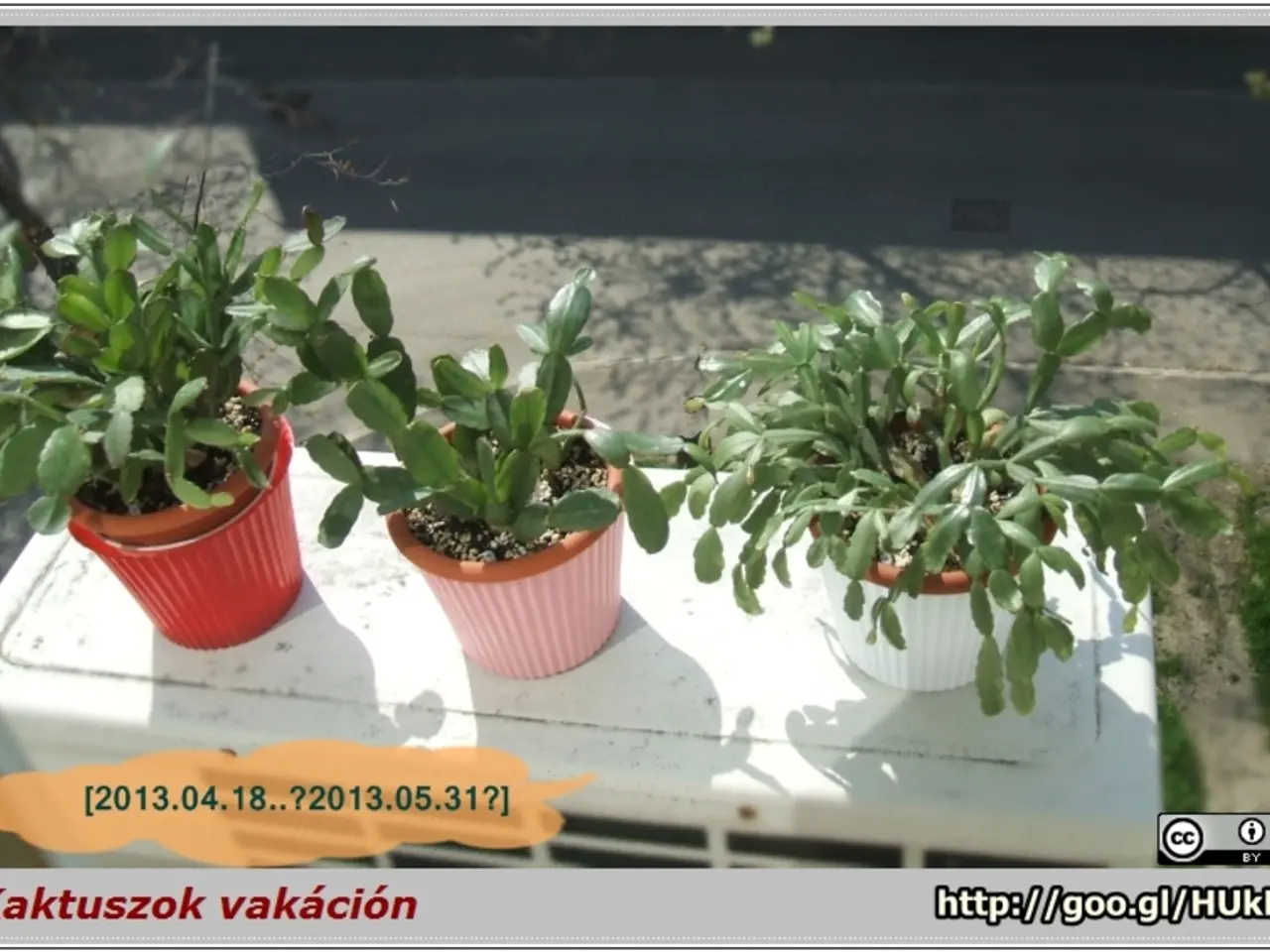Examine Soil Moisture Levels: A Brief Guide to Thriving Vegetation
Soil moisture meters are handy devices for garden enthusiasts and plant parents alike, helping to ensure that plants receive the right amount of water. These handheld devices measure the moisture content in the soil, providing valuable insights into a plant's hydration needs.
When using a soil moisture meter, it is essential to consider the type of soil you have. For sandy soil, which drains quickly, opt for a meter that can accurately detect low moisture levels to avoid underwatering. Clay soil, which retains water longer, requires a meter capable of measuring high moisture levels reliably to prevent waterlogging. Soils with intermediate drainage, like loam, call for a meter balanced for moderate moisture measurement.
Analog and digital meters cater to different preferences. Analog meters are simple, often less expensive, and easy to use for basic moisture level readings. Digital meters, on the other hand, offer more precise, detailed data, sometimes including additional parameters like temperature and light. Some digital meters even connect to apps via Bluetooth for plant-specific care.
Ensure the meter’s probe is long enough to reach the root zone of your plants, as moisture readings reflect actual conditions where roots absorb water. Calibration is key to ensuring accurate readings. Calibrate the meter according to your soil type and local conditions as recommended by the manufacturer.
When transitioning hydroponic basil to soil, it's important to acclimate the plant gradually to prevent shock. Start by placing the roots in a small pot filled with damp soil for a few hours, then gradually increase the amount of soil over several days. After the basil is fully acclimated, it can be transplanted into a larger pot or outdoor garden.
For potted plants, the diameter of the container determines how much soil to check. For a 6-inch diameter pot, the top 2 inches of soil drying out indicates the plant needs watering. For larger containers, water when the top 0.5 to 1 inch of soil is dry.
Remember that the reading will depend on the depth of the probe in the soil. If your soil is very fluffy and airy, this may affect the accuracy of the reading. To get a comprehensive understanding of soil moisture, check readings at different spots around your plants.
Different plants have different tolerances to moist soil, so it's always a good idea to research the specific needs of your plant. For drought-tolerant plants like cacti, succulents, and Ficus species, checking the surface of the soil is less useful, as they need to be watered when the soil is dry a few inches deep.
After watering, wait 15-20 minutes and check the soil again with the meter. If your plant looks like it is wilting, but the meter says the soil is moist, the meter may not be working properly. Clean the meter after each use, and do not keep it in the soil.
If your soil has a high salt content, you may get inaccurate readings. Using a soil moisture meter can help ensure plants are getting the right amount of water, supporting healthy plant growth. If the needle in the display window is bouncing around, the probe may be touching a small rock or piece of metal in the soil.
In summary, choose a soil moisture meter based on your soil and plant type, ensuring probe length and calibration match your conditions. Use the meter regularly, taking readings at root depth and multiple locations, to optimize watering and support healthy plant growth. Digital meters with app connectivity can provide enhanced care for complex plant collections.
When considering a garden or plant-focused lifestyle, investing in a soil moisture meter can be beneficial for both home-and-garden enthusiasts and plant parents, as it helps to regulate watering levels in various soil conditions. Different soil types, such as sandy, clay, and loam, require meters tailored to accurately measure moisture levels and prevent overwatering or underwatering.




